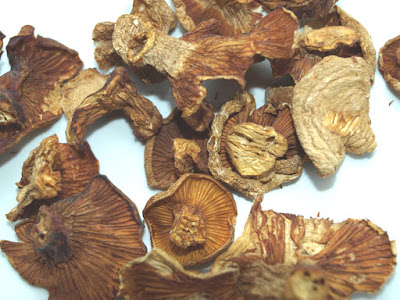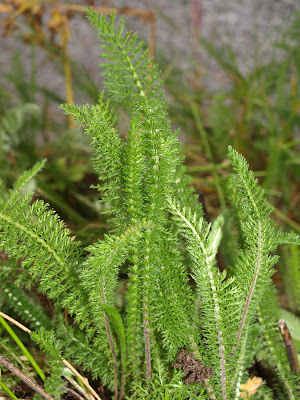
This is an article on places to find food taken from the book Edible Plants for Preppers (available from Amazon Kindle for £2.50 or free on Kindle Unlimited). The book contains a lot of useful information for UK preppers on a vegan diet.
CHAPTER 2: Four places to find food
Four main food sources during a crisis include:
1. Own food stocks (prepared before the crisis)
2. Home grown food
3. Wild food foraging
4. Other ways to find food
1. Own food stocks
Stocking up on supplies of food will need to be done now and not after a crisis has begun. It is recommended to keep a deep larder (long term food stores). This means ensuring a supply of food for a minimum of three months to one year or more. Important items include grain, pulses, nuts, seeds, fruit and vegetables, oil, sugar/syrup, salt, vinegar, yeast, baking powder, yeast extract, stock powder/cubes, herbs, spices, longlife or powdered milk, protein or smoothie mixes, dried fruit, tea, coffee, seeds for sprouting and sowing, bottled water and a means of making water safe, supplements, plus other favourite or familiar items e.g. breakfast cereal, peanut butter, jam, biscuits, chocolate, soft drinks or alcohol. Many will want to stock up on food for special diets such as diabetics or babies as well as food for dogs, cats and other companion animals.
There are companies who specialise in long life food for emergencies, expeditions, travelling, backpacking and camping such as MREs (meals ready to eat). These types of food are often expensive but a small stock kept alongside main supplies or in a bug out bag can be useful. Similar, but rather more cheaper, foods are available from supermarkets such as cereal bars, snack bars and meals in a packet or pot which only require the addition of hot water. These types of foods may not have a long shelf life but are, nevertheless, very useful. Ensure there are plenty of supplies of food that can be eaten straight out of a jar, tin or packet without needing to be heated.
It is wise to stock food that is normally eaten. Morale will plummet if the family has to eat food they are not familiar with or dislike. A really precise list of food to store for each household is difficult as each family has different tastes and requirements. Be sensible, look at what the household currently consumes each week and estimate on the generous side. Other family members, friends and strangers may unexpectedly turn up requiring nourishment. Stock up on a variety of different foods to avoid food fatigue. A body may physically reject a food that has been eaten repeatedly and in quantity over a long period of time.
Try using one of the prepping calculators available online. They provide good general guidelines regarding what quantities to buy. The Americans have been doing long term food storage for many years and are very good at it so check out American food storage and preppers websites. The Mormans (The Church of Jesus Christ of Latter Day Saints), for example, encourage the members to store food for emergencies and also supply useful information on this subject.
If it is too expensive to buy stock in one go, buy in extra food when doing a regular shop. Set this aside. It will soon mount up. Store in a cool dark place and rotate it in date order using up the oldest food items first. This way food remains fresh and any changes in diet can easily be accommodated e.g. baby grows up so baby food is no longer required. In reality of course anyone can eat baby food but this is just an example. It is particularly important to rotate fats and oils as they can go rancid quickly.
Long term storage items such as long life emergency foods packed to a high standard and other foods such as whole wheat grain, can be omitted from the short term rotation and simply left in storage.
Don’t spend a lot of time calculating precise calorific or nutritional content of every item thereby delaying or preventing any purchase of stock. It is far better to have something than nothing at all.
2. Home grown food
Family food supplies can be supplemented or, given enough space, energy and time, completely supplanted by home grown food. Even growing small amounts of fruit and vegetables is preferable to being 100 per cent reliant on Government agencies, supermarkets, etc during, or outside of, a crisis.#
Those living in rural areas will usually have no problem finding land to grow food on. Those in urban areas have more of a challenge but urban agriculture does exist and the interest in it increasing. It is already used to successfully feed people in other areas of the world.
Any food that can be home grown is going to be beneficial. What people choose to grow is a personal decision but some fruit and vegetables are better than others. It is particularly important to concentrate on reliable easy-to-grow filling food that will store well.
3. Wild food foraging
Edible wild plants colonise urban and rural areas alike. Instead of spending valuable time searching the counryside for edible wild plants just leave a flowerbed unweeded or lawn unmown and see what comes up. Those near the coast can forage for sea vegetables.
Some of the most common plants found in the British Isles are blackberries, cleavers, hawthorn and the very important nettle. They are all edible. Try out some recipes using wild plants so that they become familiar to use. Make nettle soup or use it in place of spinach. Add chickweed to green salads. Make dandelion coffee or plantain tea.
Wild plants are very important and may be the mainstay for food during times of crisis. They are the most nutritionally beneficial of all plant foods. Wild plant seeds can be purchased so if there is nothing to forage in the immediate vicinity, they can be home grown.
4. Other ways to find food
In Europe during World War 2 bartering became a popular way of obtaining food and other essential items. People who have a surplus stock of one particular item may be willing to share or swap it for something else. Do not be afraid to stockpile or grow more food than required. Surplus food will always be useful.
Ask for food. It is probably a good idea to ask those you think have a plentiful supply. Those who have very little may not want to share. Some people may feel uncomfortable doing this but it is nothing to be ashamed of. People generally do not die of shame but they do die through lack of food.
Raid bins and skips behind cafes, restaurants, hotels, supermarkets and large institutions with their own catering departments. During a crisis these places will probably discard less or no food but something may still be available.
In an extreme crisis situation rationing may be introduced and Government and volunteer agencies may provide essential supplies either by setting up distribution points on the ground or by air drops.
A distribution system for emergency food supplies (called a foodbank) for people in need is already in place in the UK. The Trussell Trust is the largest of these networks. Over 913,138 adults and children in the UK received three days’ emergency food from Trussell Trust foodbank in 2013-14. Rising food and fuel prices, static incomes, under-employment and sanctioning of benefits are some reasons why people turn to foodbanks.


































